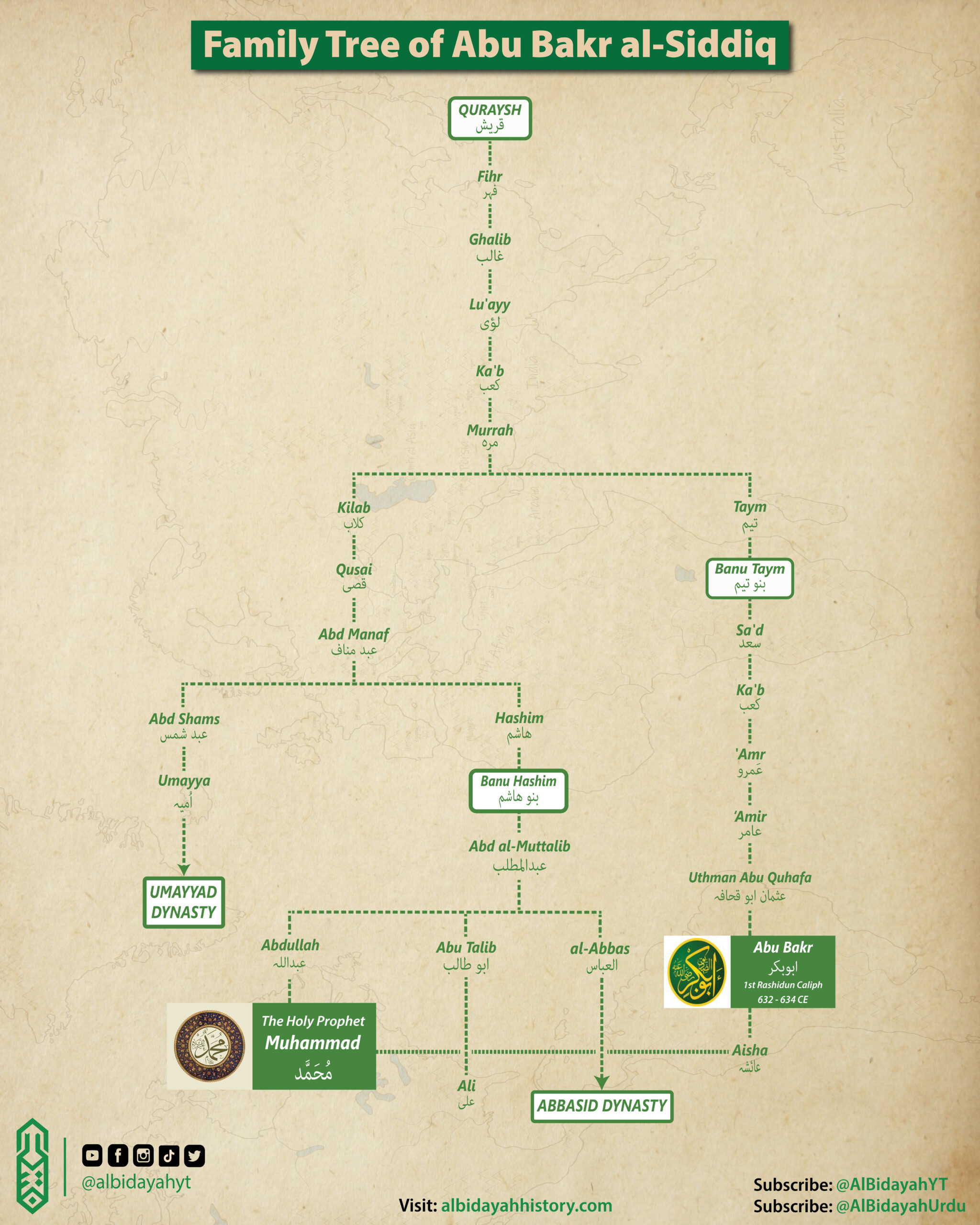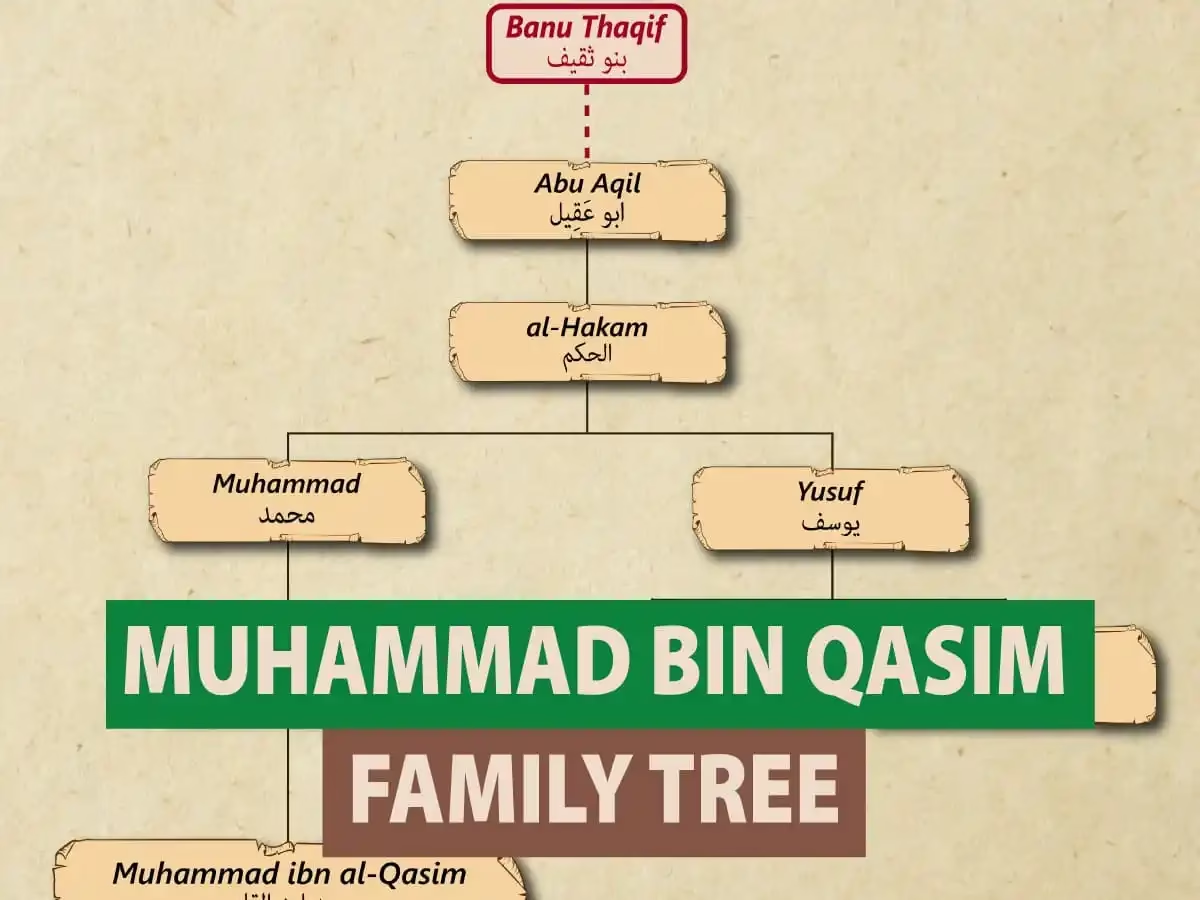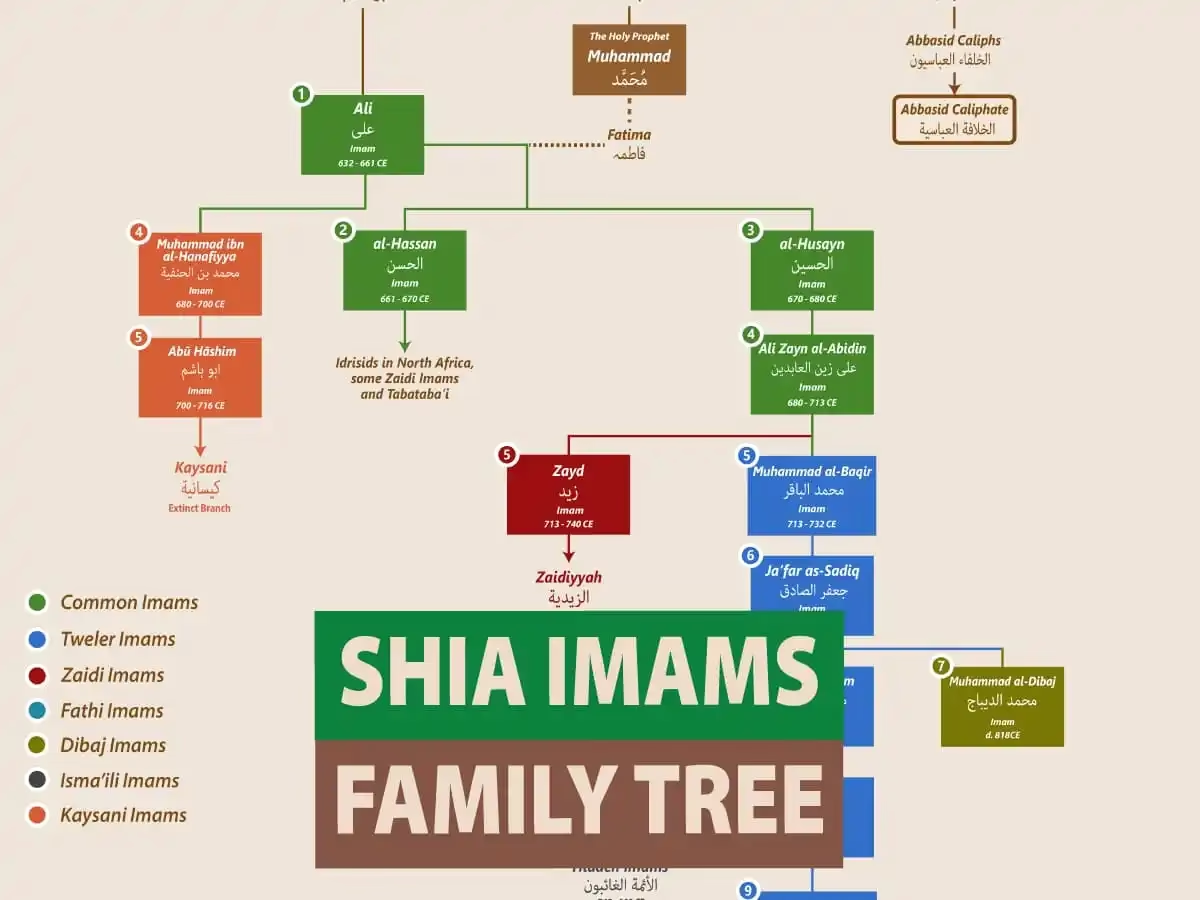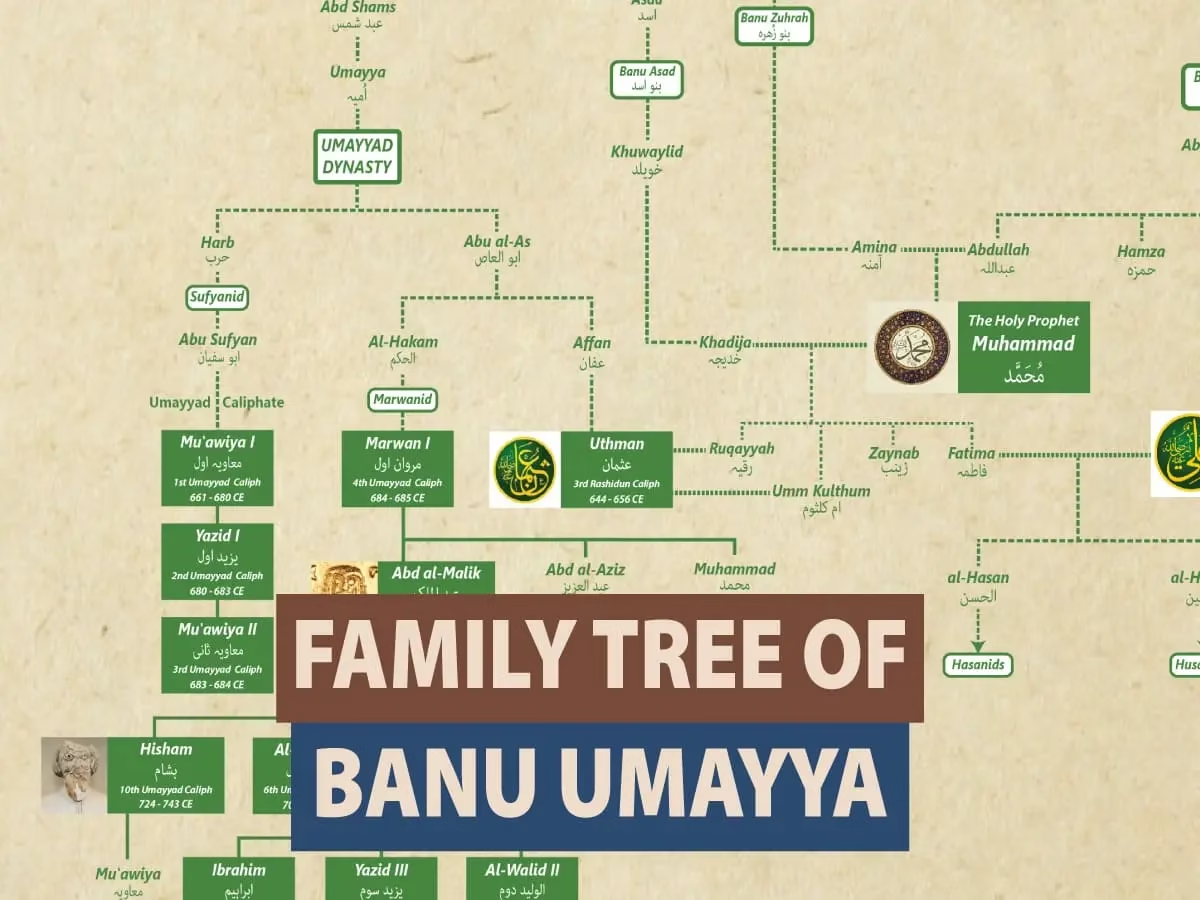The family tree of Abu Bakr al-Siddiq showcases the Abu Bakr’s lineage connected to the Prophet Muhammad (PBUH) through Murrah ibn Ka’b, an ancestor they shared. The family tree in the image traces Abu Bakr’s lineage back to Fihr ibn Malik, a common ancestor of the Quraysh tribe, which also included Prophet Muhammad (PBUH).

The Quraysh Tribe
The Quraysh was one of the most powerful tribes in Mecca, known for its dominance in trade and politics. Abu Bakr belonged to the Banu Taym clan of Quraysh, which played a significant role in early Islamic history. The Quraysh tribe itself descended from Fihr, who is considered the progenitor of the Quraysh.
Abu Bakr’s Lineage
Fihr ibn Malik: The Progenitor of Quraysh
Fihr ibn Malik is regarded as the common ancestor of all Quraysh tribes. He laid the foundation for the unity of the Quraysh and established their dominance in Mecca.
Ghalib ibn Fihr
Ghalib ibn Fihr carried forward the legacy of his father and reinforced Quraysh’s position as a leading tribe.
Lu’ayy ibn Ghalib and Ka’b ibn Lu’ayy
Lu’ayy ibn Ghalib played a significant role in strengthening the tribal customs and maintaining the unity of the Quraysh. His son, Ka’b ibn Lu’ayy, continued this mission and was instrumental in shaping the tribal hierarchy.
Murrah ibn Ka’b
Murrah ibn Ka’b was the father of Taym, who was the direct ancestor of Abu Bakr.
Taym: The Ancestor of Banu Taym
Taym was the direct ancestor of Abu Bakr. His lineage became known as Banu Taym, a sub-clan of Quraysh that held an esteemed position in Mecca. He was a member of the Quraysh al-Bitah (i.e. Qurayshites living near the Kaaba in Mecca), and an uncle of the Qurayshite chief Qusayy ibn Kilab, who was a paternal ancestor of Prophet Muhammad (PBUH).
Sa’d and Ka’b
Taym’s son Sa’d fathered Ka’b, who played a crucial role in the political and social affairs of the Quraysh.
Amir ibn ‘Amr ibn Ka’b
Ka’b’s descendant, Amir, fathered Uthman Abu Quhafa, who was the father of Abu Bakr.
Uthman Abu Quhafa, Father of Abu Bakr
Abu Quhafa, born Uthman ibn Amir, was the father of Abu Bakr al-Siddiq, the first Rashidun caliph. He belonged to the Banu Taym clan of the Quraysh and resided in Mecca. His wife, Umm al-Khayr Salma, was Abu Bakr’s mother. He later married Hind bint Nuqayd, with whom he had three daughters: Umm Farwa, Qurayba, and Umm Amir.
Initially, Abu Quhafa remained a pagan, disapproving of his son’s conversion to Islam. He opposed Abu Bakr’s actions, including his efforts to free Muslim slaves. In 622 CE, when Abu Bakr migrated to Medina, he took all his wealth, leading Abu Quhafa to believe he had left his family in hardship. However, his granddaughter Asma bint Abi Bakr reassured him otherwise.
In 630 CE, during the Conquest of Mecca, Abu Quhafa, who was elderly and nearly blind, witnessed the Muslim army’s arrival. He was taken to the Prophet Muhammad (PBUH) by Abu Bakr, where he embraced Islam. The Prophet advised dyeing his white hair. Abu Quhafa died a few months later in March 635 CE, at the age of 97 lunar years (approx. 94–95 solar years).
Abu Bakr al-Siddiq
Abu Bakr al-Siddiq was the first caliph of Islam, ruling from 632 to 634 CE. A close companion and father-in-law of the Prophet Muhammad (PBUH), he is honored with the title al-Ṣiddīq (The Truthful).
Born as Abdullah ibn Abi Quhafa into the Banu Taym clan of the Quraysh, he was the son of Abu Quhafa and Umm al-Khayr. One of the earliest converts to Islam, Abu Bakr played a key role in spreading Islam, convincing many companions to embrace the faith. He migrated to Medina alongside Prophet Muhammad (PBUH) and served as his advisor, financier, and military participant. He led prayers in Prophet Muhammad’s absence and was appointed as the first amir al-hajj in 631 CE.
Following Muhammad’s death in 632 CE, Abu Bakr was elected Caliph of Islam at Saqifa, though his leadership faced resistance from several Arab tribes, leading to the Ridda Wars (Wars of Apostasy). His decisive military campaigns reunified Arabia and launched the first Muslim incursions into the Sassanian and Byzantine empires, paving the way for future Islamic conquests. He is also credited with initiating the compilation of the Quran into a written manuscript.
In August 634 CE, after a brief reign of two years, two months, and 14 days, Abu Bakr fell ill and nominated Umar ibn Khattab as his successor. He died of natural causes and was buried beside Prophet Muhammad (PBUH) in the Green Dome of Al-Masjid an-Nabawi in Medina.
See Also: Khalid bin Walid Family Tree
Relationship with Prophet Muhammad (PBUH)
From a young age, he was known for his honesty, integrity, and gentle demeanor. His nickname, “al-Siddiq,” meaning “the truthful,” was given to him by Prophet Muhammad because of his unwavering belief and support, especially during challenging moments like the Isra and Mi’raj (the Night Journey). When others doubted, Abu Bakr stood by the Prophet without hesitation. Additionally, their relationship was strengthened through Abu Bakr’s daughter, Aisha bint Abi Bakr, who became the wife of Prophet Muhammad (PBUH).
The closeness of Abu Bakr to Prophet Muhammad was most evident during the Hijrah (migration) from Mecca to Medina. The two set out together, facing danger every step of the way. They hid in the cave of Thawr for three days while their enemies scoured the land, seeking to capture them. During those tense moments in the cave, Abu Bakr’s primary concern was the safety of the Prophet, showcasing his selflessness and deep love for his friend.
See Also: Family Tree of Prophet Muhammad (PBUH): Quraysh to Imam Mahdi



